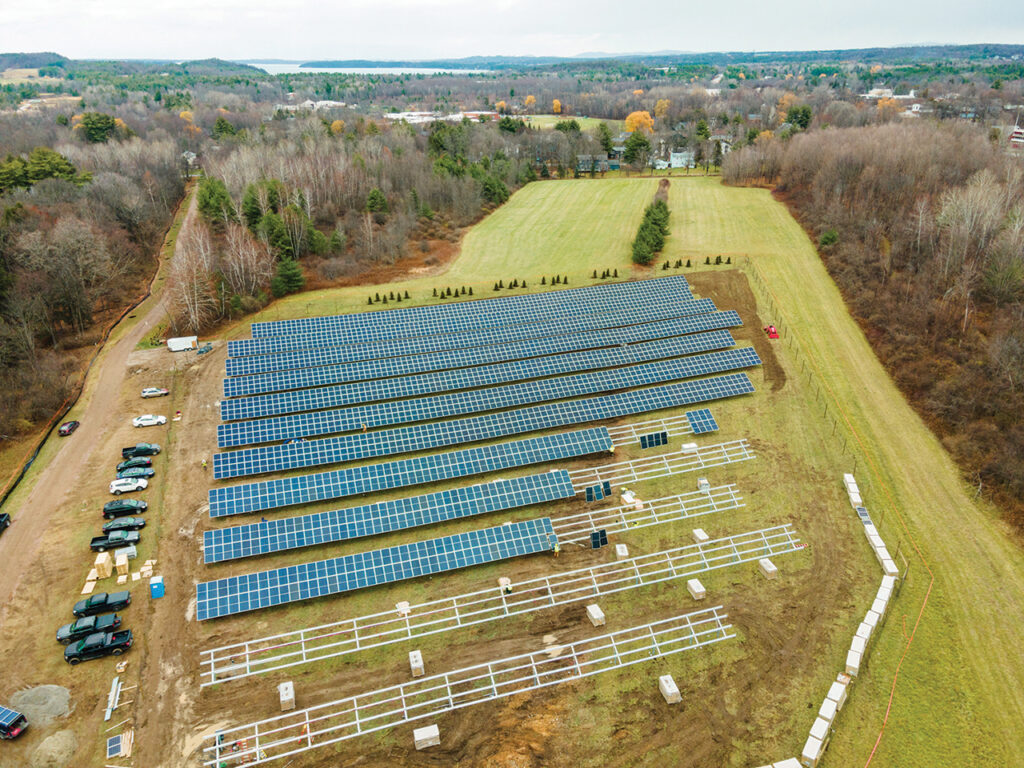The Shelburne Museum holds as eclectic a collection as any in its verdant corner of New England. Paintings span Claude Monet to Andrew Wyeth, a replica Adirondack hunting lodge details, gun by gun, Vermont’s firearm history, and, in an ode to a different Americana, circus memorabilia that includes 500 posters, some dating to the 1830s, and a fully operational carousel.
But the museum’s most compelling recent addition lies beyond the walls and centers not on its collection, but its infrastructure. By the end of the year, the museum just south of the Vermont capital of Burlington will be fully powered by renewable energy.

The installation of the array on a site adjacent to the museum campus — a development financed and constructed in partnership with Encore Renewable Energy. Image: Shelburne Museum
The feat has been achieved by covering two plots of land adjacent to the Shelburne Museum with large solar power systems, known as arrays, the first of which was completed in late 2020. Financed and constructed in partnership with local company Encore Renewable Energy, the arrays have a 25-year life cycle with the museum estimating each year they’ll generate the carbon equivalent of powering 150 New England homes and removing around 200 cars off the road.
“Shelburne Museum has a long-standing commitment to the environment,” Thomas Denenberg, the museum’s Director, tells Jing Culture & Commerce. “We’re committed to being good stewards of the land we inhabit, just as we’re responsible for the world-class collections at Shelburne Museum.”

When completed at the end of 2021, Shelburne’s solar power system will generated an estimated 1,200,000 kilowatt-hours of clean electricity annually. Image: Shelburne Museum
As with most museums, it’s the climate control requirements of this collection that entails much of the high energy consumption. Add in the fact the museum comprises 39 buildings and it’s understandable Denenberg says a permissible and cost-efficient solution was a decade in-the-making. In the interim, Shelburne made strides to reduce its consumption (and electricity bill) by introducing LED lighting throughout the museum, optimizing HVAC systems, and ensuring the vast education center it built in 2013 was LEED Silver-certified.
But the museum’s sustainability push goes further than generating 1.2 million kilowatt-hours of clean electricity: the ground beneath the solar fields is being transformed into a habitat for bees, courtesy of Bee the Change, a local non-profit tackling the pollination crisis through promoting organic beekeeping. It’s a natural extension, Denenberg says, of an existing pollinator study from graduate students at the University of Vermont.
Amid the host of social issues that have confronted the cultural sector over the past year, the carbon footprint of physical institutions endures as a broadly unresolved problem. Unlike their European counterparts whose government funding is often tied to tackling energy inefficiencies, U.S. museums enjoy no such guidance or pressure.
Still, with energy costs often the leading cost on a museum’s budget, there’s a financial as well as a moral obligation.



